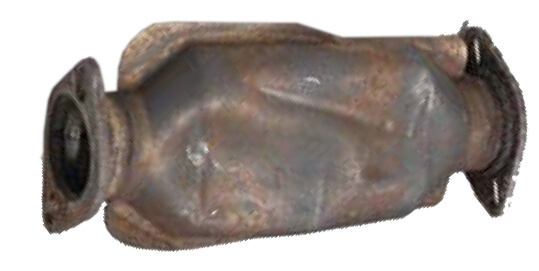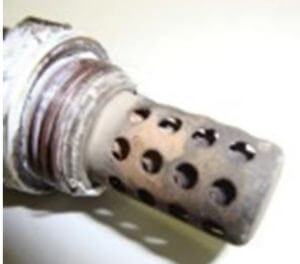What causes catalytic converter failure and P0420
Causes of catalytic converter failure and P0420
A P0420 trouble code Catalyst System Efficiency Below Threshold (Bank 1), and P0430 Catalyst System Efficiency Below Threshold (Bank ) usually mean you’ll be in the market for a new catalytic converter.
A P042o or P0430 is almost never a bad oxygen sensor
Yes, I know that many online sites tell you to fix a P0420 with a new oxygen sensor. In rare cases, that might fix the problem. But for the vast majority, replacing the oxygen sensor is really wishful thinking and a waste of money.
The rare cases when an oxygen sensor could cause a P0420 or P0430
On many pre-1996 vehicles the upstream oxygen sensor uses a “narrow band” type sensor, and post 1996 vehicles often use this type of sensor as the downstream sensors.
These sensors compare the amount of oxygen in the exhaust to the amount of oxygen in the outside air. It obtains and ambient sample through one of the wires (between the copper and the insulation). If the engine has dripped oil onto the electrical connector or dirt/debris has coated the wires, the sensor will give inaccurate data to the ECM.
So it’s possible a bad narrow band sensor can cause a P0420 or P0430, but it’s rare. Checking the condition of the O2 sensor connector and wires should be part of every diagnostic when encountering a cat converter code.
In addition, a lazy oxygen sensor can cause the ECM to command overly rich/lean air/fuel mixtures and prolonged operation in that mode can damage the catalytic converter.
Most common causes of catalytic converter failure and a P0420 trouble code
#1 Cause of a P0420 or P0430 trouble code
An exhaust leak upstream of the catalytic converter. Here’s how to conduct an exhaust leak test.
#2 Cause of Catalytic Converter failure — Thermal damage to the ceramic honeycomb; melting or clogging due to internal oil and coolant leaks and constant misfires
The catalytic starts to “light off” at around 350°F. But the converter must reach about 500°F – 750°F to reach optimum efficiency, with a maximum allowable temperature of around 1,600°F for short periods. The converter can withstand SHORT periods of up to 2,000°F, but sustained periods above 1,700°F can melt the ceramic honeycomb, causing a substantial reduction in exhaust flow and a reduction in engine power.
A bronze/blue rainbow discoloration of the outer shell is a sign of converter overheating
Misfires and internal fluid leaks are the most common causes of catalytic converter thermal failure. When a cylinder misfires, the unburned fuel goes into the exhaust and raises the temperature to dangerous levels. Internal oil and coolant leaks act like fuel once inside the converter, causing temperature rise and melting.
What causes misfires:
• Constantly rich mixture that loads the catalytic converter with fuel
• O2 sensor not operating correctly
• Intake manifold air leaks
• Fuel injector problems (leaks or clogs)
• Incorrect or worn spark plugs
• EGR problems
• Oil or antifreeze entering the exhaust
#3 Cause of Catalytic Converter failure —Contamination
• Excessive carbon buildup due to constant misfiring
• Silicone contamination from using RTV sealant on exhaust parts. RTV can only withstand temperatures up to 700°F. Beyond that, the RTV outgasses and deposits a silicone coating on the oxygen sensor and surface of the ceramic honeycomb.
#3 Cause of Catalytic Converter failure — Physical damage

Check for physical damage to the converter. There’s no way the ceramic honeycomb survived the impact on this converter
• Impact damage from hitting a large object
• Thermal quenching from driving through deep water or snow
In other words, catalytic converters don’t wear out, THEY’RE KILLED by all the above underlying problems. If you replace a catalytic converter without fixing the underlying problem, the new converter will fail as well.
How to test a catalytic converter
Perform a manifold vacuum test
Connect a vacuum gauge to the intake manifold. Note the reading at idle. Then raise RPMs to around 3,000. As you open the throttle, it’s normal to see a quick drop in vacuum, but it should then rise and level off. If the vacuum starts to drop off as you hold the RPMS steady, that’s the sign of a blocked cat converter. In other words, the passages through the ceramic honeycomb have either melted or become clogged or there’s an exhaust restriction in the muffler or resonator.
Perform a backpressure test
Remove the upstream oxygen sensor and insert a vacuum gauge adapter into the O2 sensor threads. Backpressure on a stock factory engine should be around 1.25-psi at idle. Raise idle to around 2,000 RPM and read the gauge. A reading of 3-psi or more indicates an exhaust restriction, either in the converter, muffler, or resonator.
The temperature input versus output temp test is no longer considered a valid test
In the early days of catalytic converters, the rule was that the input versus output temperatures must be at least 100°F apart. But better fuel injection and fuel metering and more efficient combustion has resulted in cleaner-burning engines. So the difference in input versus output temperatures in a late model vehicle can often be as little as 50°F at 2,500 RPM. That’s not enough of a difference to rule the catalytic converter good or bad. In fact, at idle, the converter can cool down to the point where the difference may actually be 0°F. If you replace a catalytic converter simply because the outlet temp matches the inlet, you may be replacing a perfectly good converter.
Tips to avoid catalytic converter contamination:
NEVER use any type of RTV on exhaust flanges. If a gasket won’t seal it, don’t reach for any type of sealer. You’ll just kill the cat converter. Have an exhaust shop weld on a new flange so it will seal with a gasket.
NEVER use Teflon tape on an O2 sensor. High-temperature  anti-seize is the ONLY sealant that’s approved for O2 sensors.
anti-seize is the ONLY sealant that’s approved for O2 sensors.
NEVER add high temp silicone RTV to O2 sensor threads. High-temperature anti-seize is the ONLY sealant that’s approved for O2 sensors.
![]()
©. 2019 Rick Muscoplat
Posted on by Rick Muscoplat